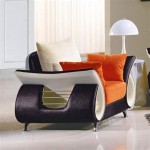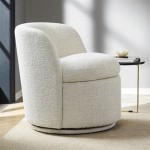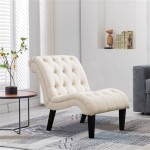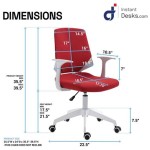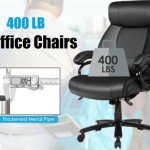Low Back Office Chair With Arms: Functionality and Ergonomics
The low back office chair with arms represents a segment within office furniture that prioritizes certain design and ergonomic considerations. These chairs, characterized by a backrest that terminates lower on the torso compared to mid-back or high-back models, are often chosen for specific office environments or to cater to individual preferences concerning posture and movement. The inclusion of arms further enhances the chair's functionality, providing support and promoting better posture for the user.
The design and construction of a low back office chair with arms require careful attention to materials, adjustability, and overall ergonomic principles. The objective is to offer a comfortable and supportive seating solution that minimizes strain and promotes productivity during extended periods of sitting. The characteristics of these chairs must be analyzed in depth to understand their advantages and limitations fully.
Understanding the Anatomy of a Low Back Office Chair
The low back office chair with arms, while seemingly simple in design, comprises several important components that contribute to its overall functionality. These include the seat, backrest, armrests, base, and adjustment mechanisms. Each element plays a crucial role in providing support, comfort, and adjustability for the user.
The seat is the primary point of contact and should offer adequate cushioning and support to distribute weight evenly. Materials used for the seat often include foam, mesh, or a combination of both. The choice of material influences breathability, durability, and overall comfort. Ergonomic features like a contoured seat pan and waterfall edge can further enhance comfort and reduce pressure on the thighs.
The backrest is the defining feature of a low back chair. Its height is significantly shorter than that of a mid-back or high-back chair, typically ending around the mid-lumbar region. While not providing full spinal support, it can offer localized support to the lower back. The backrest may be curved to conform to the natural curvature of the spine, and some models offer adjustable lumbar support for personalized comfort.
Armrests provide support for the arms and shoulders, reducing strain on the neck and upper back. They can be fixed or adjustable, with adjustable armrests allowing users to customize the height, width, and angle for optimal comfort and posture. The material used for armrests can range from padded vinyl to molded plastic, with softer materials generally preferred for increased comfort.
The base provides stability and support for the chair. Typically made of metal or reinforced plastic, the base features five casters for easy mobility. The choice of casters depends on the flooring type, with hard casters suitable for carpeted surfaces and soft casters designed for hard floors to prevent scratching.
Adjustment mechanisms are essential for customizing the chair to individual needs. Common adjustments include seat height, backrest angle, and armrest position. These adjustments allow users to fine-tune the chair to achieve optimal comfort and posture, minimizing the risk of musculoskeletal discomfort.
Ergonomic Considerations for Low Back Office Chairs
Ergonomics plays a crucial role in the design and selection of any office chair, and the low back office chair with arms is no exception. Understanding the ergonomic principles that govern proper seating posture is essential for maximizing comfort and minimizing the risk of injury. Key considerations include posture support, adjustability, and material selection.
Maintaining proper posture is essential for preventing back pain and other musculoskeletal problems. A well-designed low back chair can help promote proper posture by providing support for the lumbar region. The curvature of the backrest should align with the natural curvature of the spine, promoting an upright posture and reducing strain on the back muscles.
Adjustability is a key feature of ergonomic office chairs. The ability to adjust the seat height, backrest angle, and armrest position allows users to customize the chair to their individual needs. Optimal seat height allows the feet to rest flat on the floor with the knees bent at a 90-degree angle. Adjustable armrests should be positioned to support the arms and shoulders without causing hunching or slouching.
Material selection can also impact ergonomics. Breathable materials like mesh can help prevent overheating and improve comfort during extended periods of sitting. Cushioned seats and backrests provide support and reduce pressure points. The choice of material should also consider durability and ease of maintenance.
The absence of a headrest or full back support in a low-back chair can present ergonomic challenges. Users may unconsciously adjust their posture to compensate, potentially leading to muscle strain. This type of chair may not be suitable for individuals who require extensive back support due to pre-existing spinal conditions or prolonged sedentary work. Regular breaks and stretching exercises are especially important when using a low-back chair for extended periods.
Advantages and Limitations of Low Back Office Chairs
Low back office chairs with arms offer certain advantages in specific contexts, but they also have limitations that should be considered before making a purchase. Understanding these pros and cons allows informed decision-making and ensures that the chair aligns with individual needs and workplace requirements.
One primary advantage of low back chairs is their compact size and minimalist design. They take up less space than mid-back or high-back chairs, making them ideal for smaller offices or workstations. Their streamlined appearance can also contribute to a more modern and less cluttered aesthetic.
Another advantage is the increased freedom of movement they offer. The lower backrest does not restrict upper body movement as much as taller chairs, allowing users to reach for items or turn more easily. This can be beneficial for individuals who frequently need to access different areas of their workspace.
However, the limited back support is a significant limitation. The low backrest does not provide comprehensive spinal support, which can be problematic for individuals who require more extensive lumbar or thoracic support. This can lead to discomfort and fatigue, especially during prolonged sitting.
The absence of a headrest is another limitation. Users cannot lean back and rest their heads, which can be tiring for the neck and shoulders. This can be particularly problematic for individuals who spend long hours working at a computer.
The suitability of a low back office chair with arms depends on several factors, including the user's individual needs, the nature of their work, and the duration of sitting periods. Individuals who require minimal back support, value freedom of movement, and work in compact spaces may find these chairs to be a suitable option. However, those who require more extensive spinal support or spend long hours sitting may be better served by a mid-back or high-back chair.
Ultimately, the selection of an office chair should be based on a thorough assessment of individual requirements and a careful consideration of the chair's ergonomic features, advantages, and limitations. Trial and error, if possible, is recommended to ensure comfort and suitability before committing to a purchase.
Beyond the basic considerations outlined above, factors such as the chair's weight capacity, ease of assembly, and warranty should also be taken into account. A chair with a higher weight capacity will be more durable and suitable for a wider range of users. Easy assembly can save time and frustration, while a comprehensive warranty provides peace of mind and protection against defects.
By carefully considering these factors, individuals can make an informed decision and select a low back office chair with arms that meets their specific needs and promotes both comfort and productivity in the workplace.

Enterprise Low Back Tilt Office Chair

Simple Relax Brown Artificial Leather Low Back Adjustable Height Office Chair With Padded Armrests Sr 011681 The Home

Stressless Laurel Low Back Office Chair Hansen Interiors

Simple Relax Black Artificial Leather Low Back Adjustable Height Office Chair With Padded Armrests

Amish Low Back Upholstered Home Office Chair With Wood Frame And Casters

Stressless Mint Low Back With Arms Office Chair Hansen Interiors

Executive Low Back Chair White

Dirk Low Back Swivel Office Armchair

Low Back Desk Arm Chair

Global 3212 Low Back Office Chair

